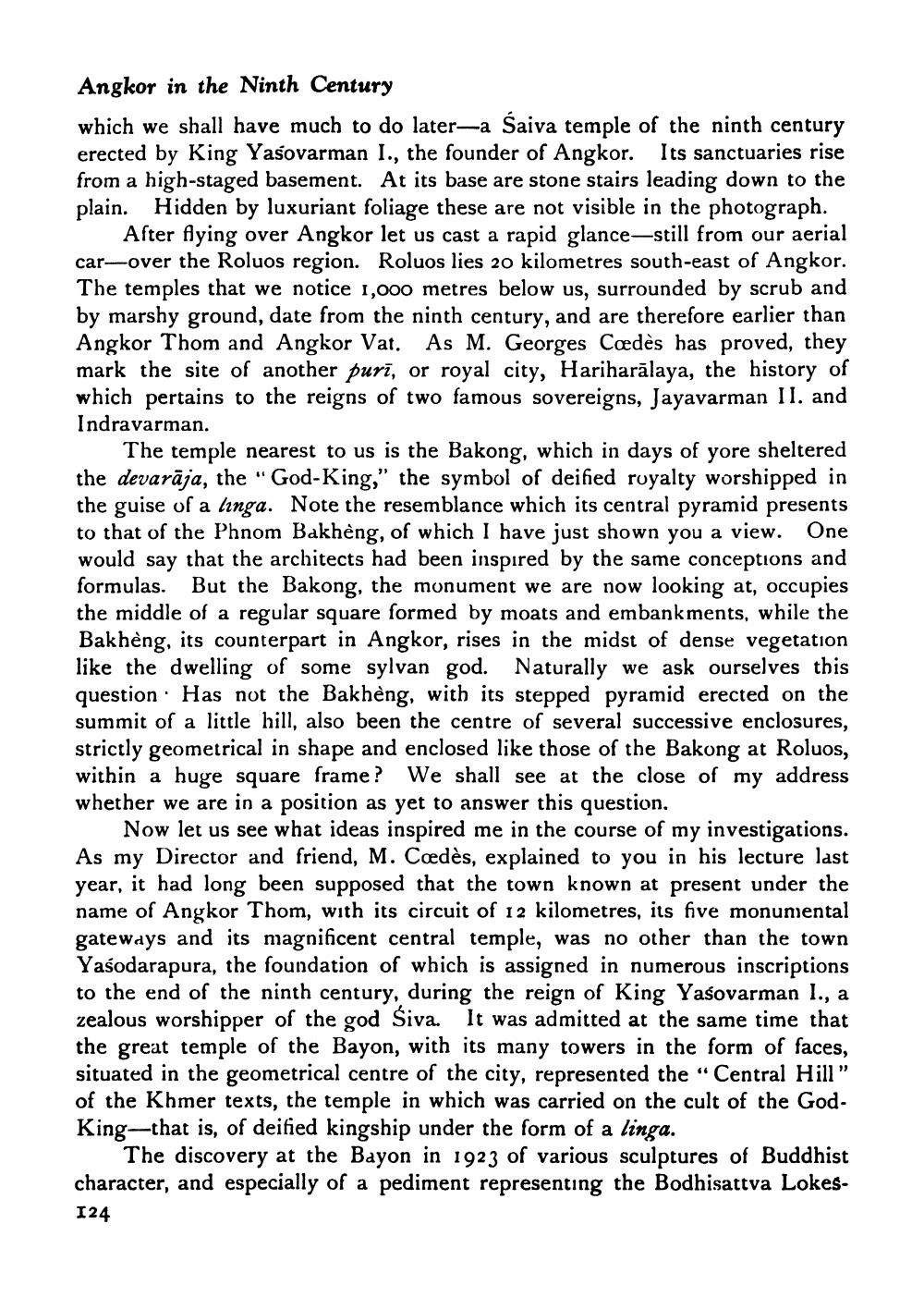________________
Angkor in the Ninth Century
which we shall have much to do later-a Śaiva temple of the ninth century erected by King Yasovarman I., the founder of Angkor. Its sanctuaries rise from a high-staged basement. At its base are stone stairs leading down to the plain. Hidden by luxuriant foliage these are not visible in the photograph.
After flying over Angkor let us cast a rapid glance-still from our aerial car over the Roluos region. Roluos lies 20 kilometres south-east of Angkor. The temples that we notice 1,000 metres below us, surrounded by scrub and by marshy ground, date from the ninth century, and are therefore earlier than Angkor Thom and Angkor Vat. As M. Georges Coedès has proved, they mark the site of another puri, or royal city, Hariharalaya, the history of which pertains to the reigns of two famous sovereigns, Jayavarman II. and Indravarman.
The temple nearest to us is the Bakong, which in days of yore sheltered the devaraja, the "God-King," the symbol of deified royalty worshipped in the guise of a linga. Note the resemblance which its central pyramid presents to that of the Phnom Bakhèng, of which I have just shown you a view. One would say that the architects had been inspired by the same conceptions and formulas. But the Bakong, the monument we are now looking at, occupies the middle of a regular square formed by moats and embankments, while the Bakhèng, its counterpart in Angkor, rises in the midst of dense vegetation like the dwelling of some sylvan god. Naturally we ask ourselves this question Has not the Bakhèng, with its stepped pyramid erected on the summit of a little hill, also been the centre of several successive enclosures, strictly geometrical in shape and enclosed like those of the Bakong at Roluos, within a huge square frame? We shall see at the close of my address whether we are in a position as yet to answer this question.
Now let us see what ideas inspired me in the course of my investigations. As my Director and friend, M. Coedès, explained to you in his lecture last year, it had long been supposed that the town known at present under the name of Angkor Thom, with its circuit of 12 kilometres, its five monumental gateways and its magnificent central temple, was no other than the town Yasodarapura, the foundation of which is assigned in numerous inscriptions to the end of the ninth century, during the reign of King Yasovarman I., a zealous worshipper of the god Śiva. It was admitted at the same time that the great temple of the Bayon, with its many towers in the form of faces, situated in the geometrical centre of the city, represented the "Central Hill" of the Khmer texts, the temple in which was carried on the cult of the GodKing-that is, of deified kingship under the form of a linga.
The discovery at the Bayon in 1923 of various sculptures of Buddhist character, and especially of a pediment representing the Bodhisattva Lokes
124
.




